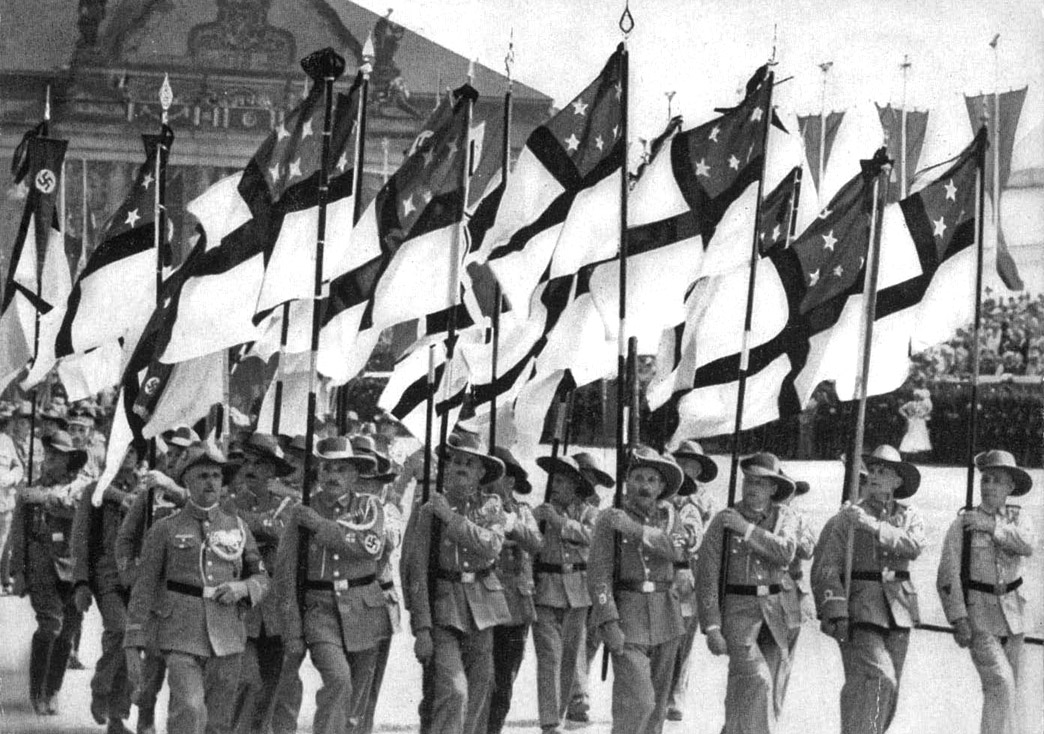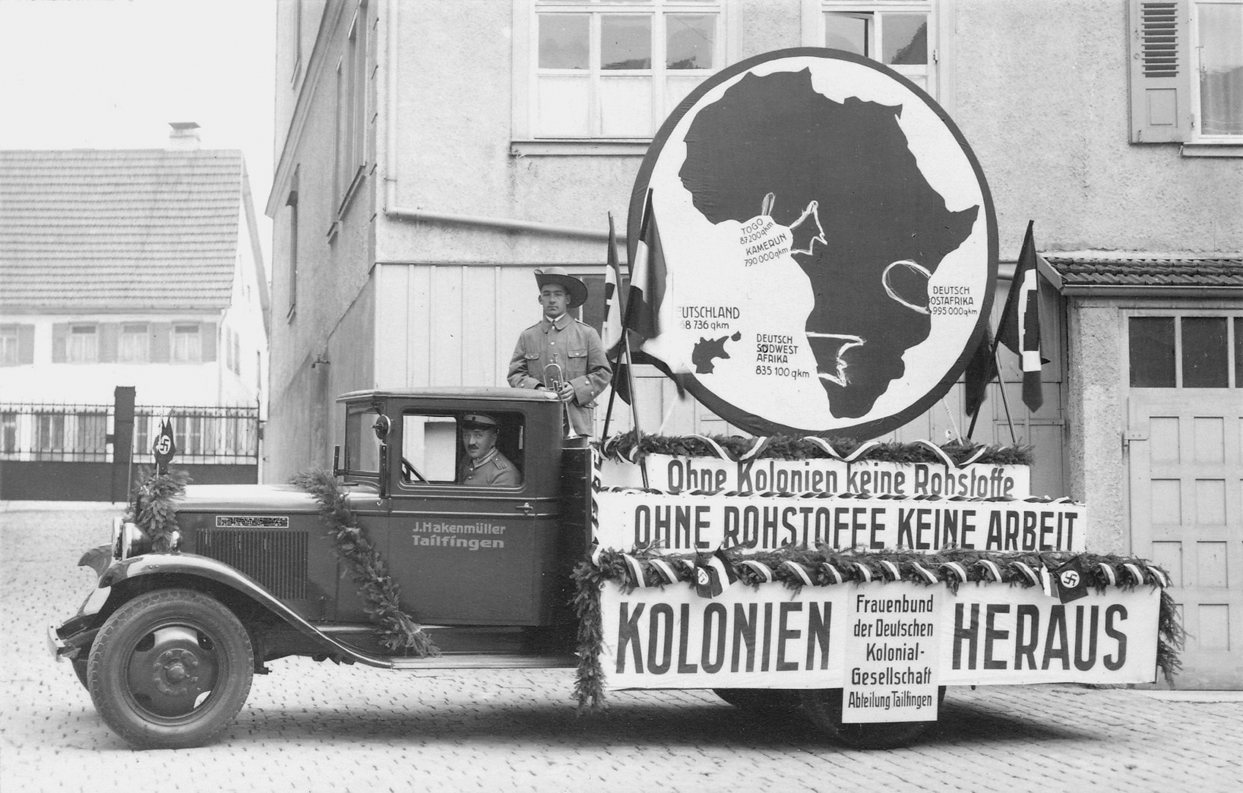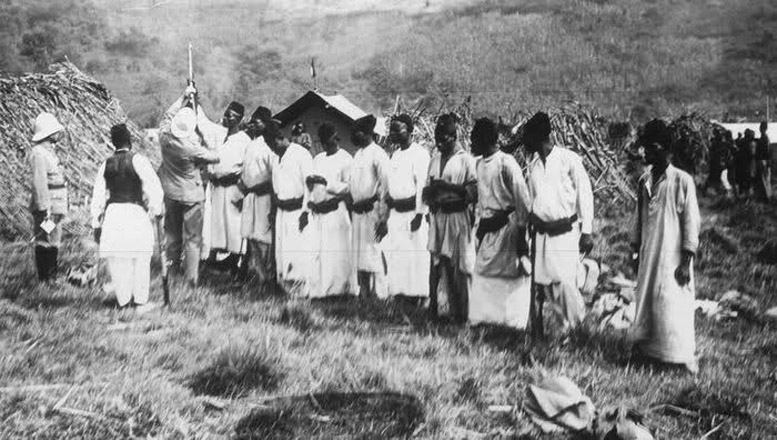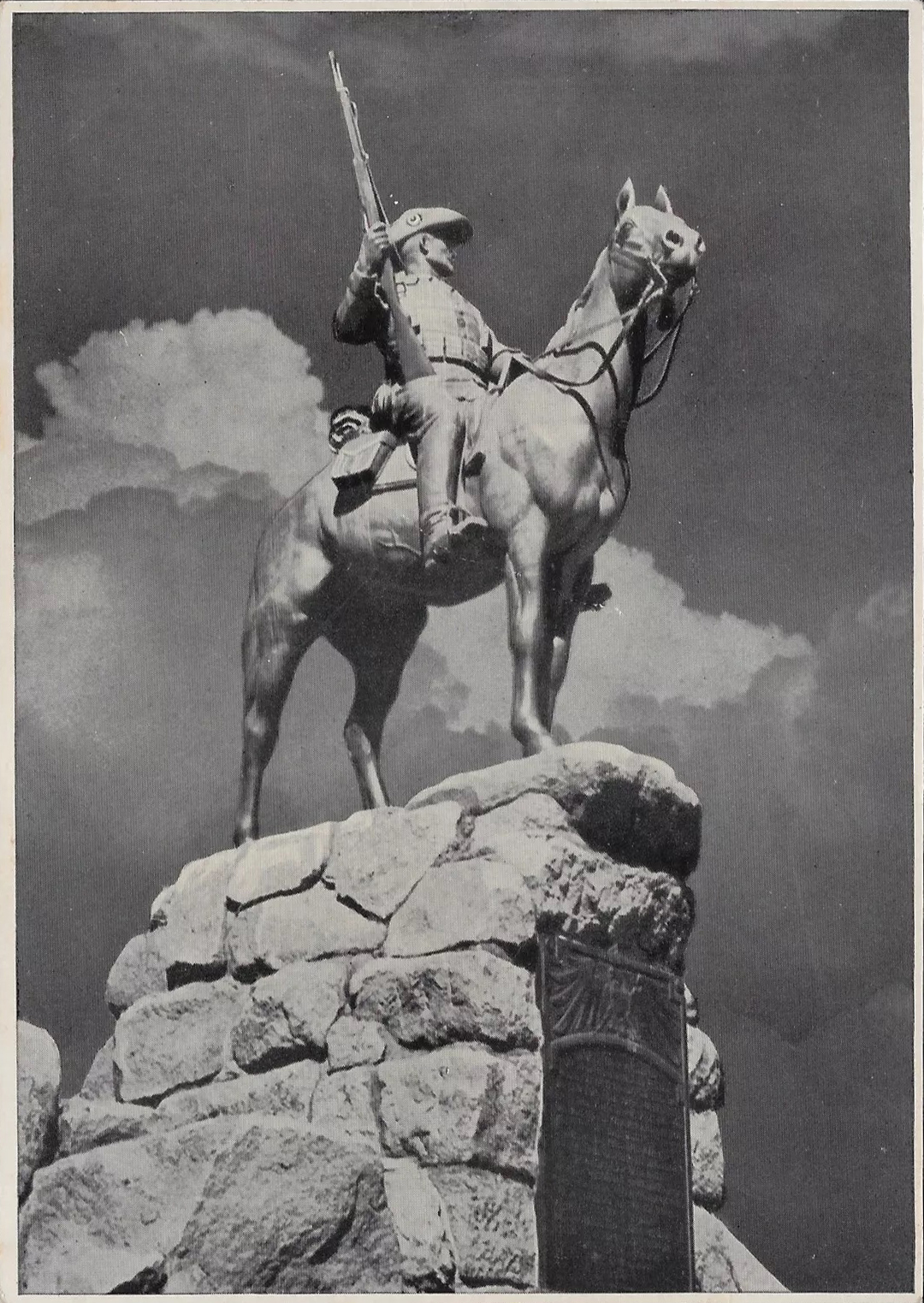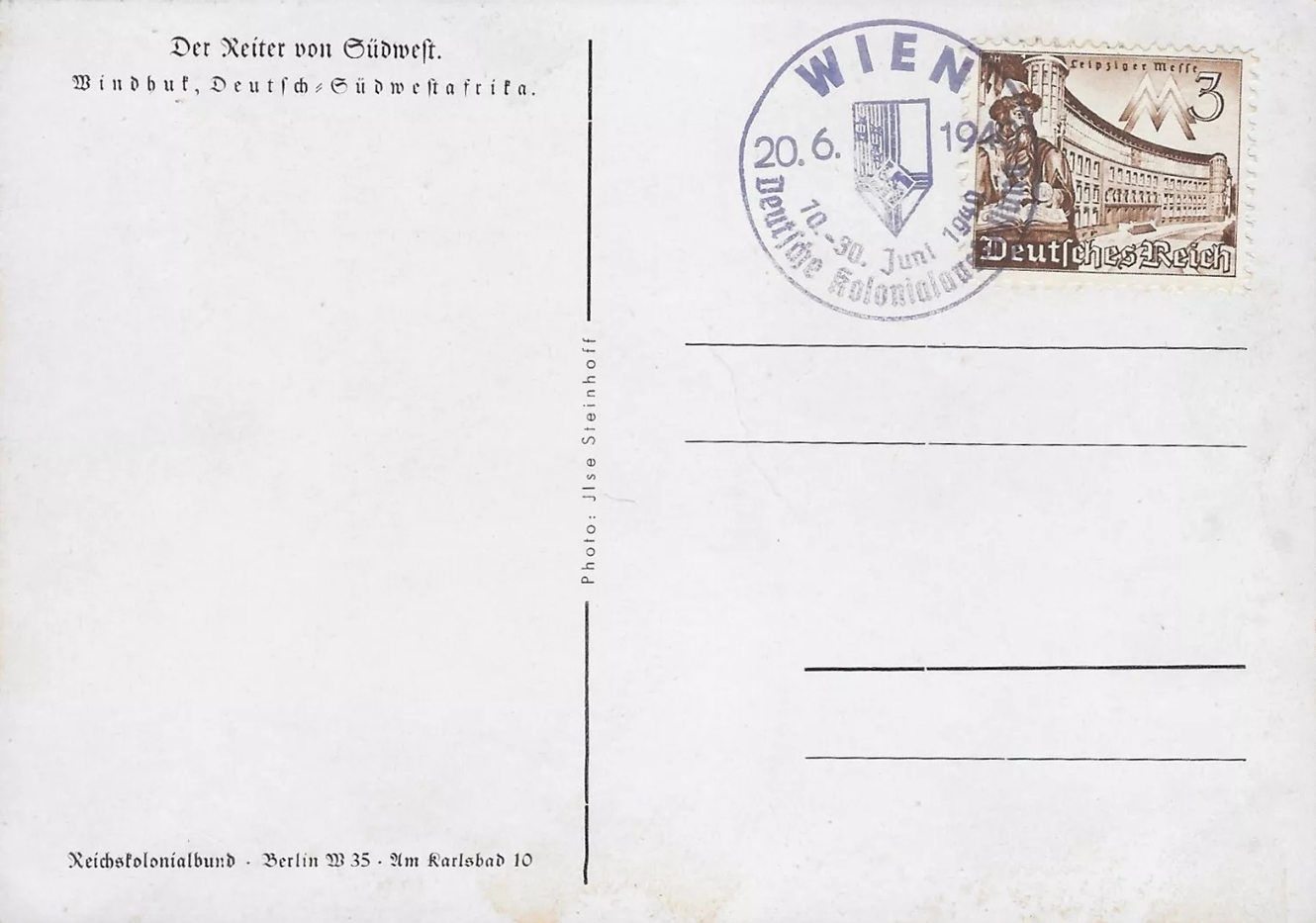[Above: Courtesy of the Bundesarchiv.]
[Above: Courtesy of the Bundesarchiv.]
[Above: Courtesy of the Bundesarchiv.]
[Above: Courtesy of the Bundesarchiv.]
[Above: Courtesy of the Bundesarchiv.]
[Above: Courtesy of the Bundesarchiv.]
[Above: Courtesy of the Bundesarchiv.]
[Above: Courtesy of the Bundesarchiv.]
[Above: Courtesy of the Bundesarchiv.]
[Above: Courtesy of the Bundesarchiv.]
[Above: A Feldkompagnie of askaris during rifle training.]
[Above: Criminals meet their fate.]
[Above: 'Schutztruppe' askaris of the 6. Feldkompagnie cleaning their JB71 rifles in Udjiji in 1912.]
[Above: Young askaris training with two heliographs as part of the Schutztruppe Signal Detachment.]
[Above: Askari standing guard, circa 1914.]
[Above: A Schutztruppe askari reading a newspaper to his comrades. The Germans taught young askaris to read and write at their Signals Depot in Dar-Es-Salaam.]
[Above: Courtesy of the Bundesarchiv.]
[Above: Askaris of the 21. Feldkompanie, 1917.]
[Above: German East African Polizeitruppe. Note the German NCO on the far left of the group. Circa 1906-1914.]
[Above: German East African Schutztruppe captured by British Rhodesian troops during WWI at Ilembula, December 1916.]
[Above: An old veteran sporting a ton of medals and looking very cool.]
[Above: A studio portrait of a German East African soldier. The sign says: 'Die Welt is weit, die Welt is schön, (The world is wide, the world is beautiful,
[Above: German veterans of WII in German East Africa marching in Germany.]
[Above: The placards on this truck basically say: 'Without colonies there would be no raw materials -
without raw materials there is no work'.]
[Above: Postcard - front.]
[Above: Postcard - reverse.]
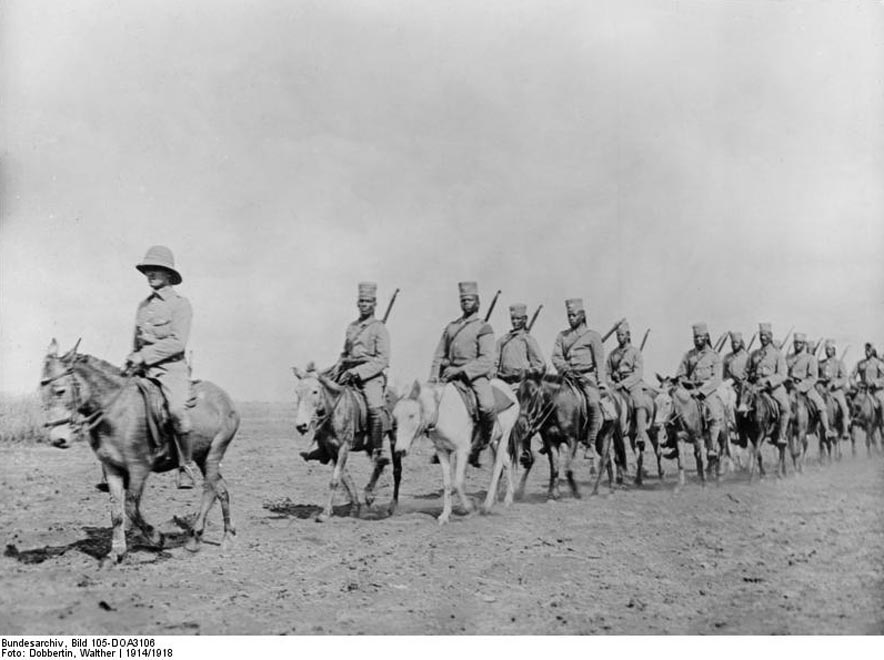
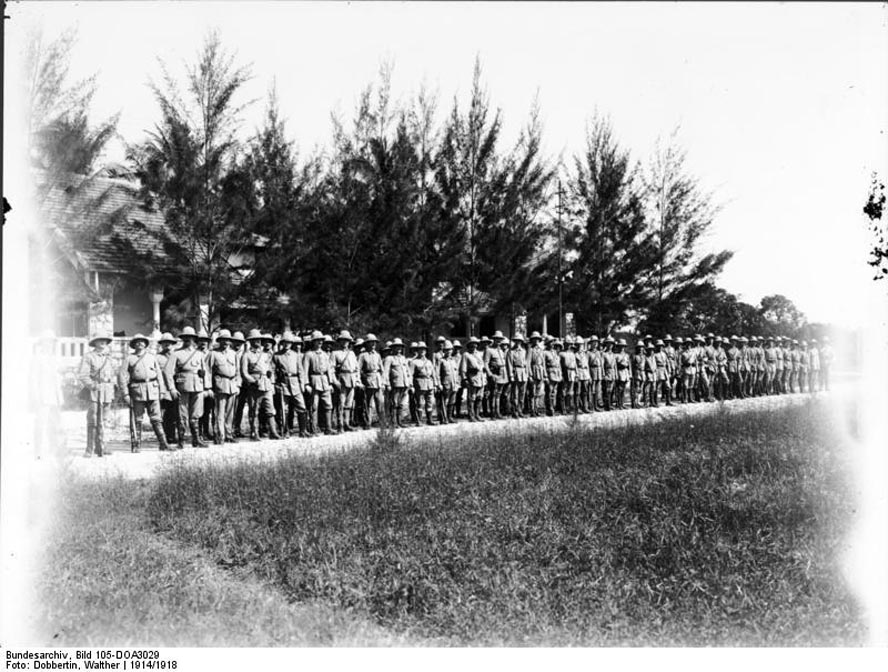
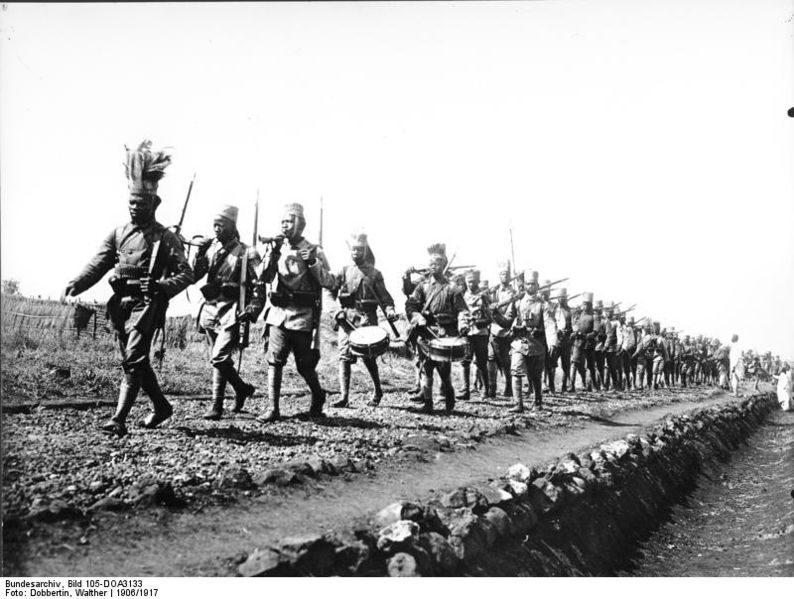
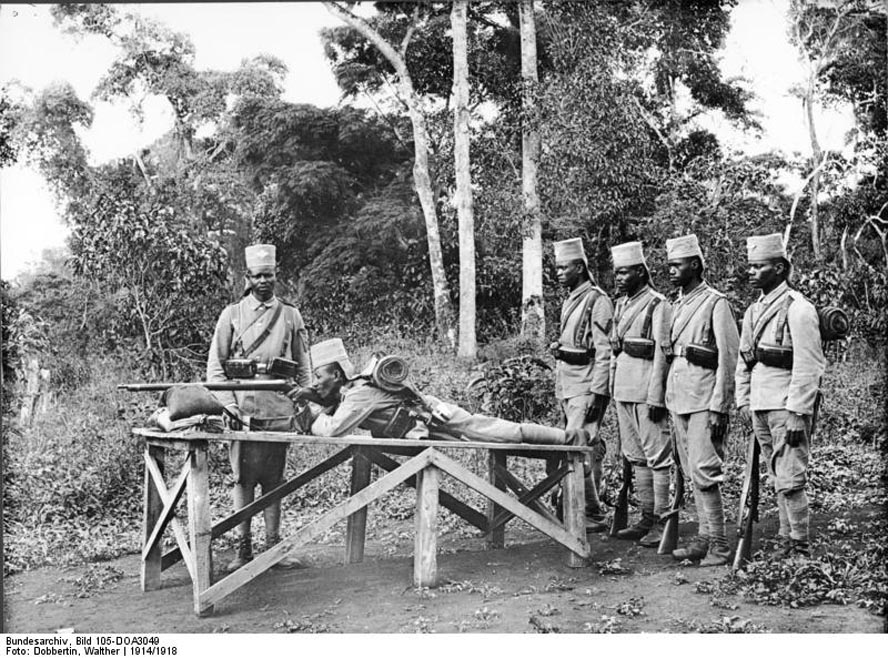
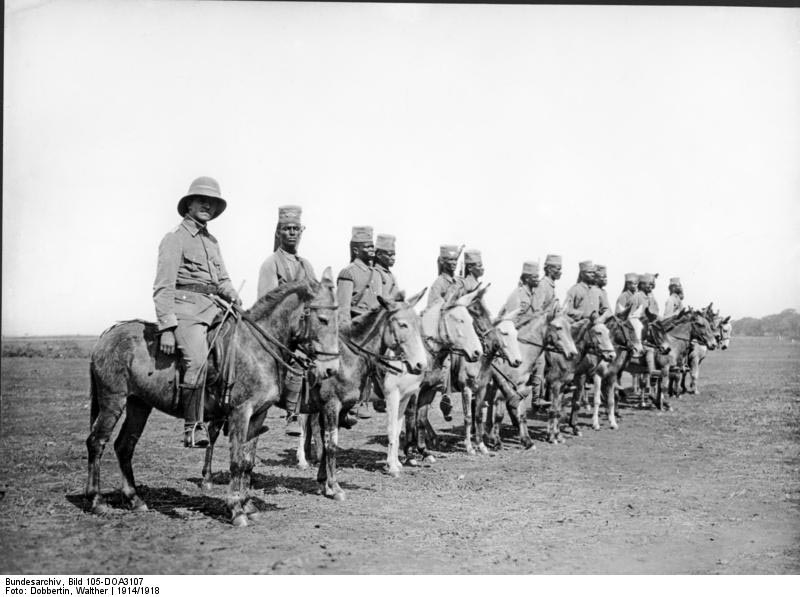
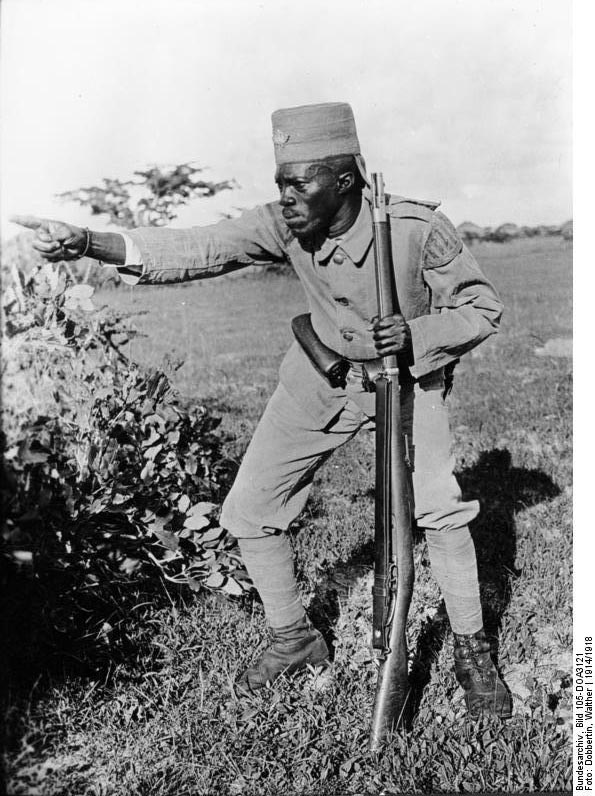
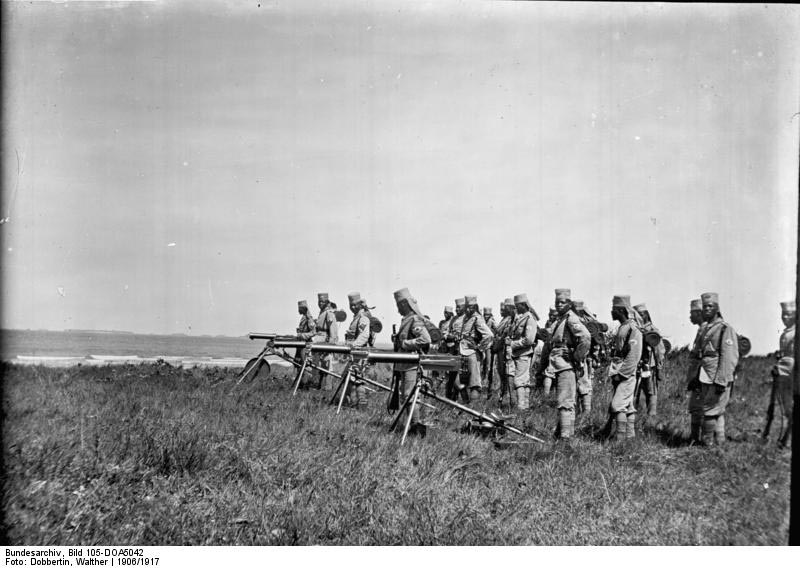
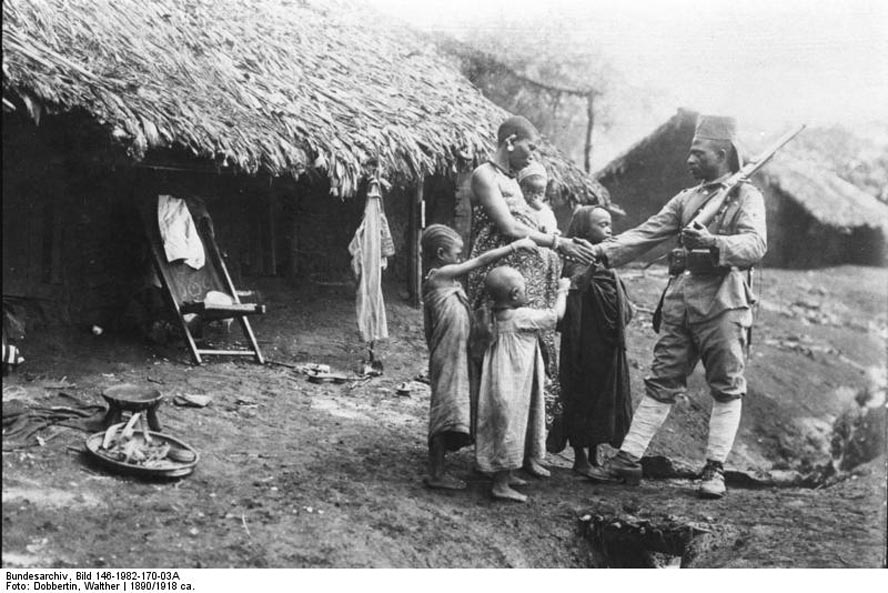
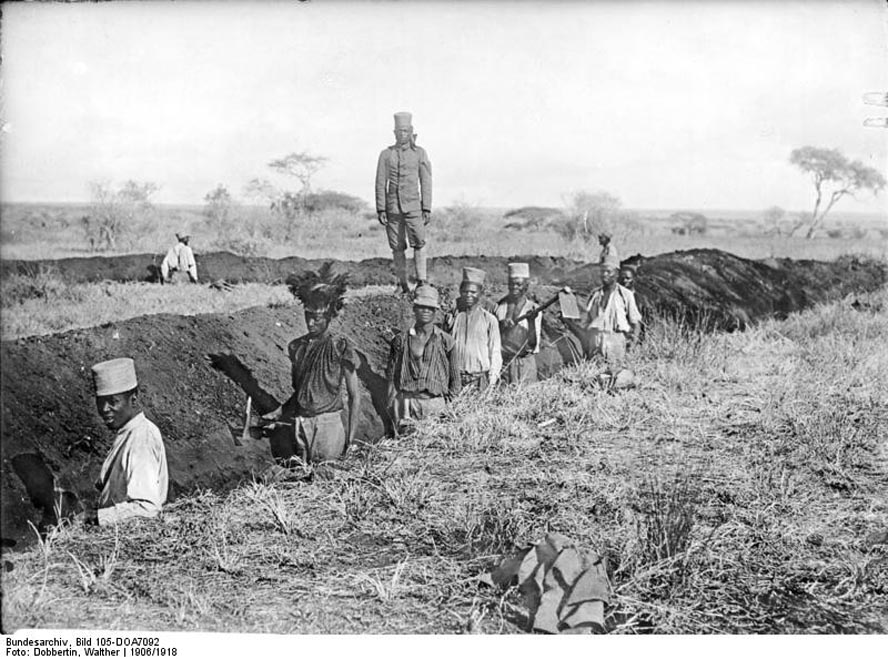
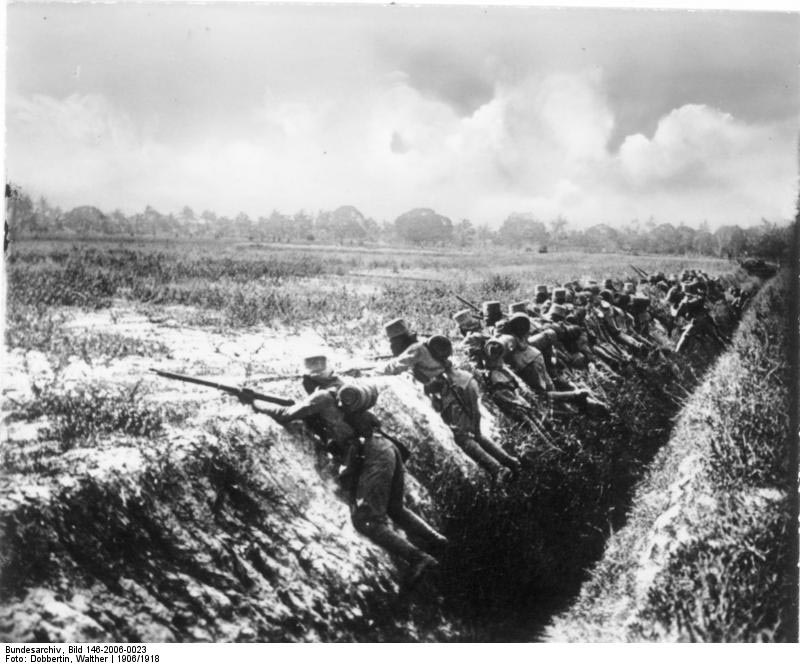
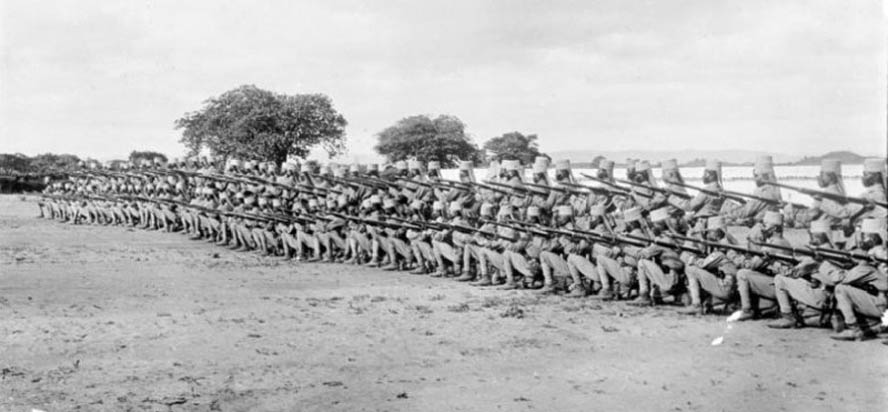

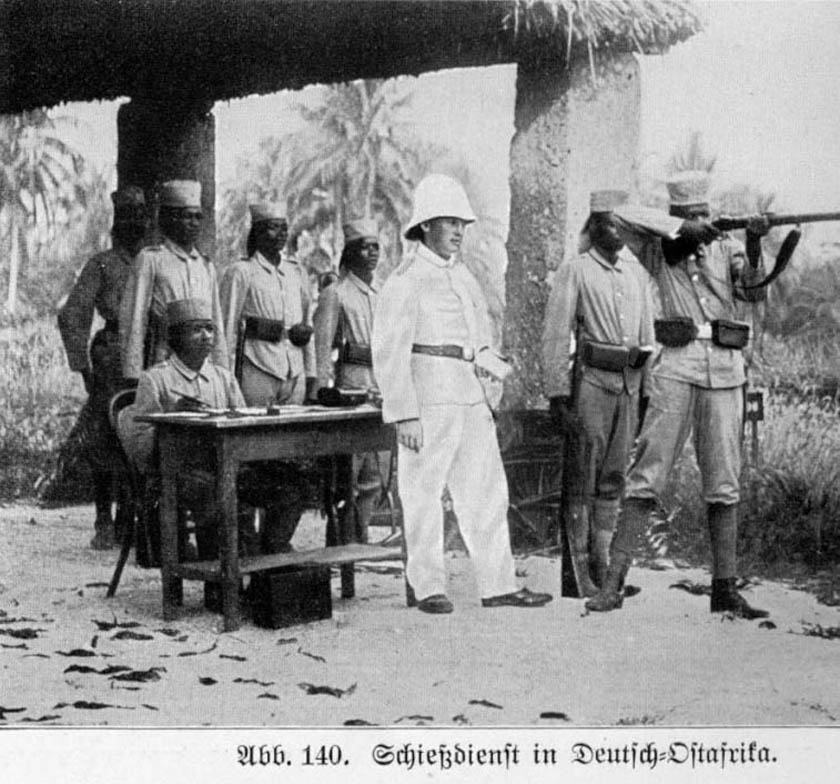
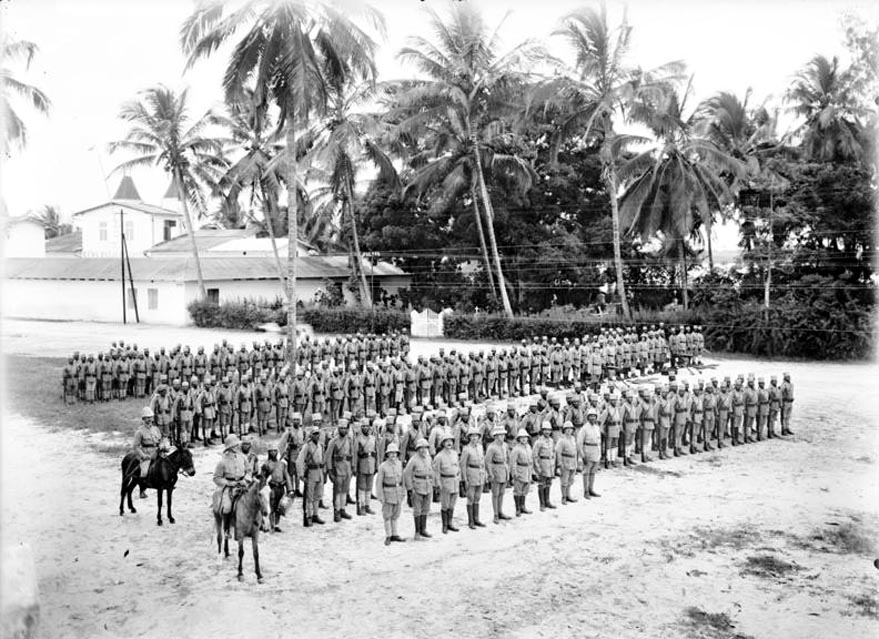
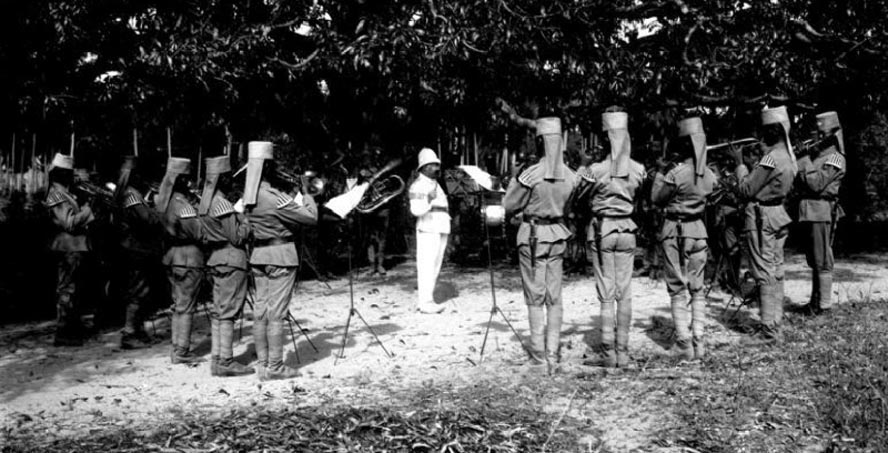
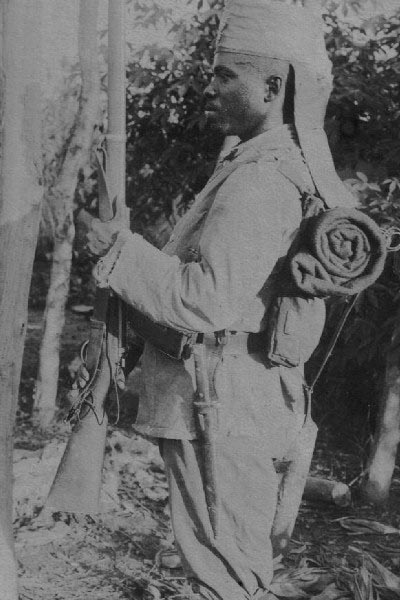
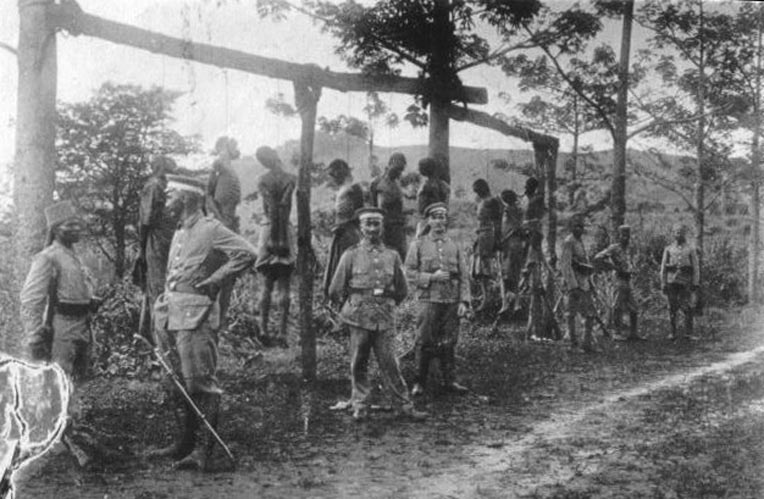
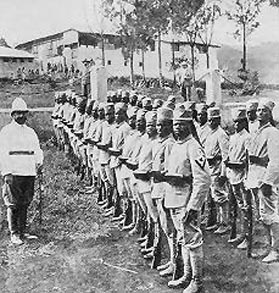
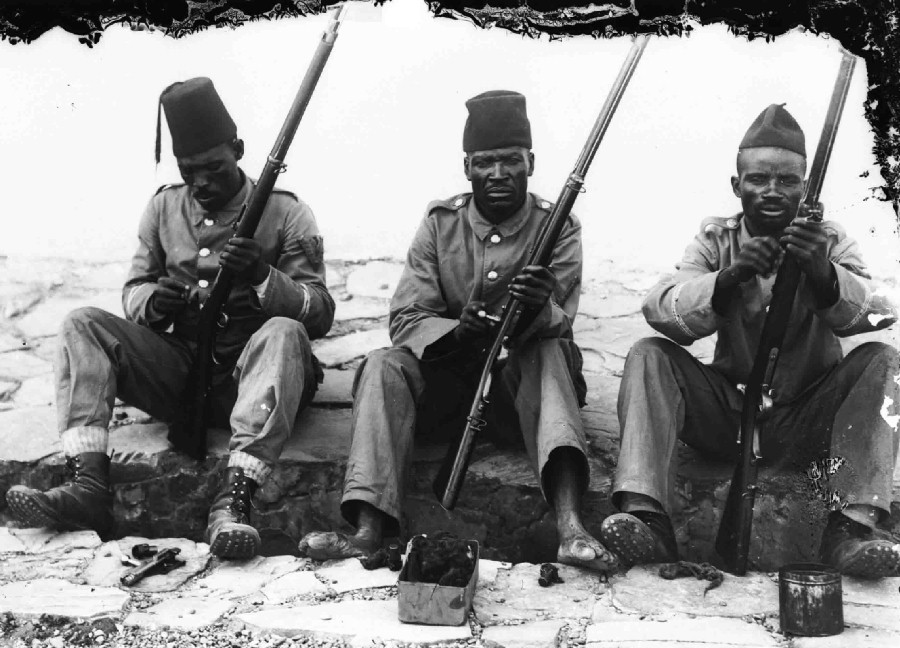
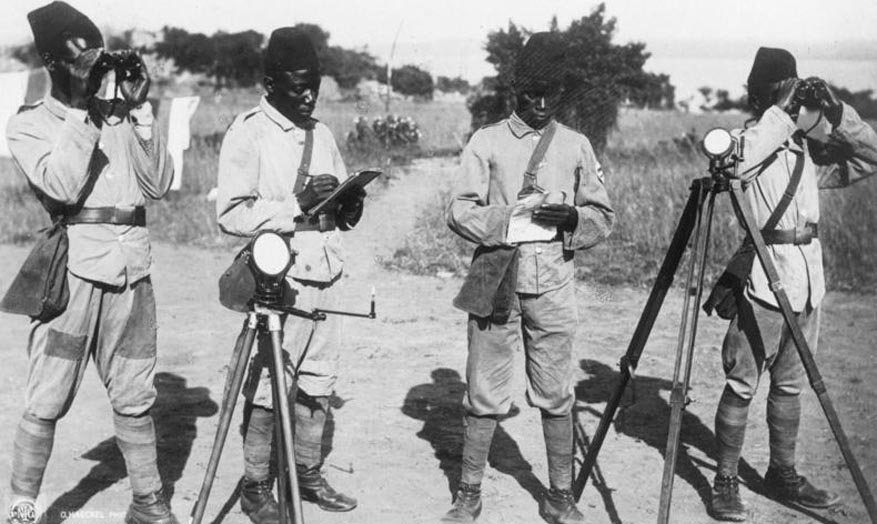
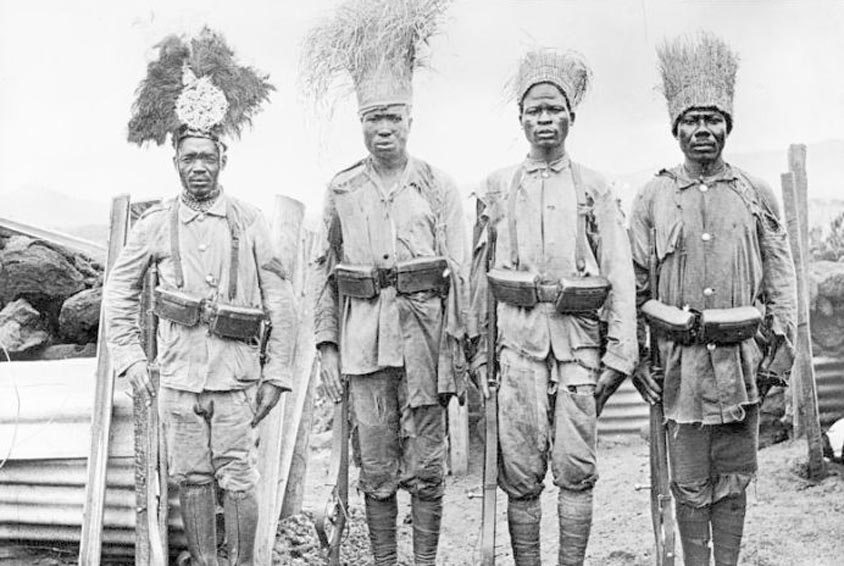
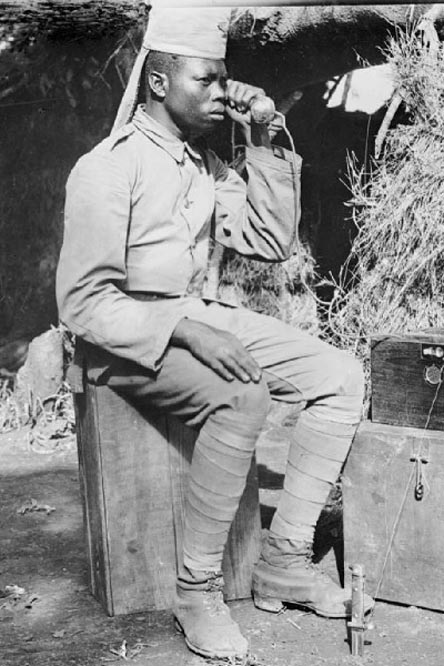
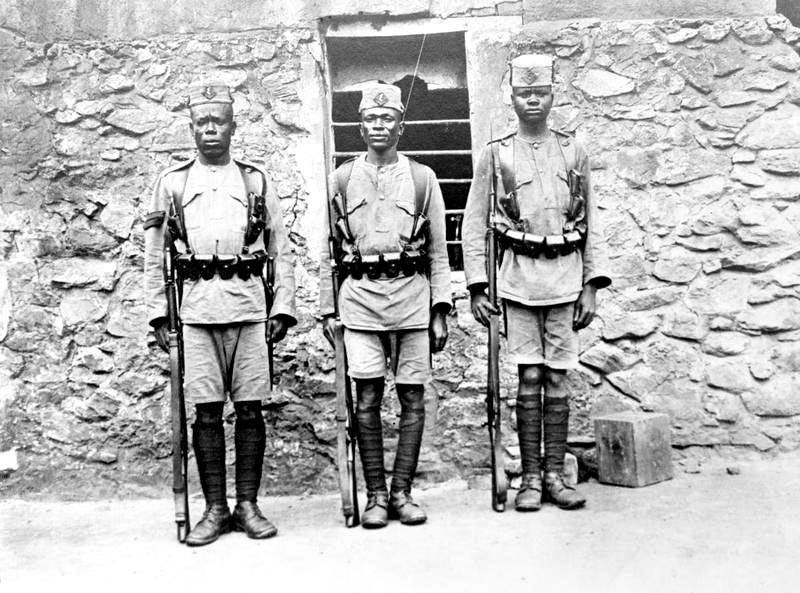
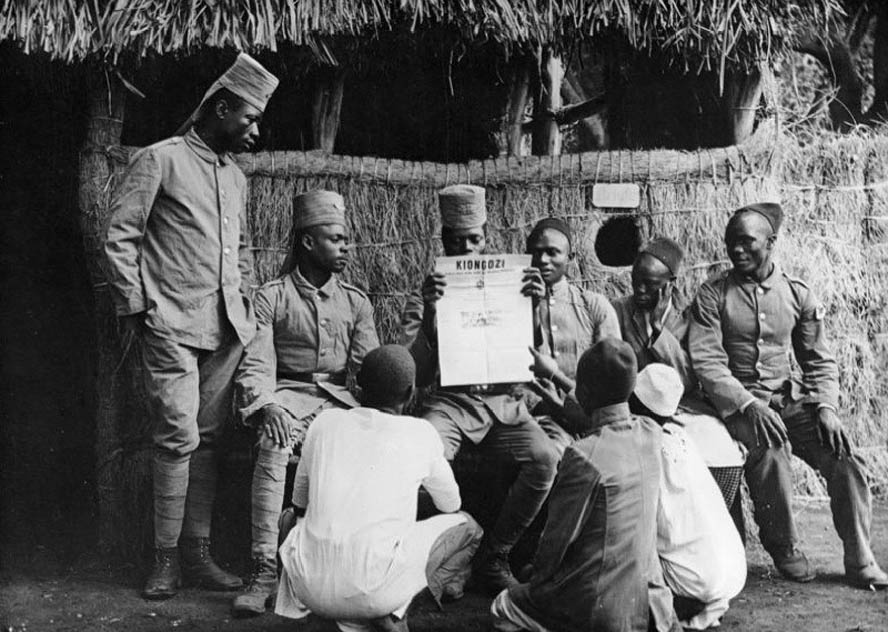
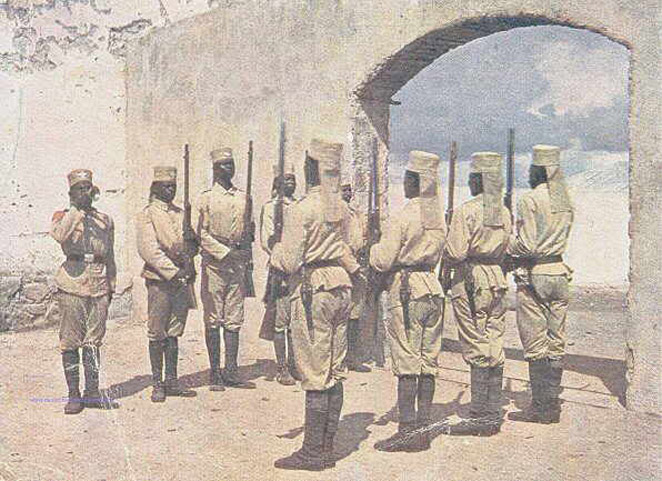
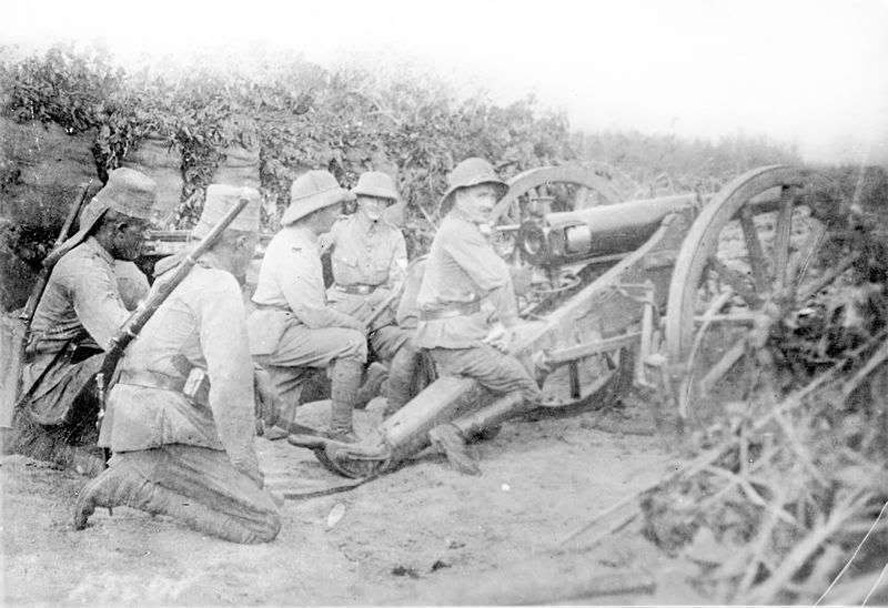
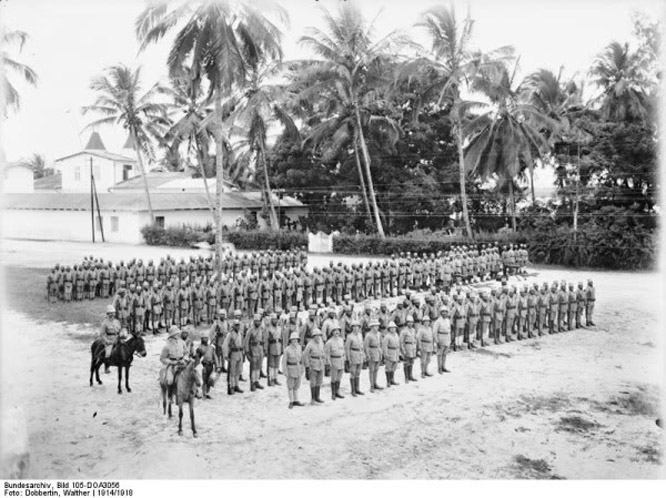
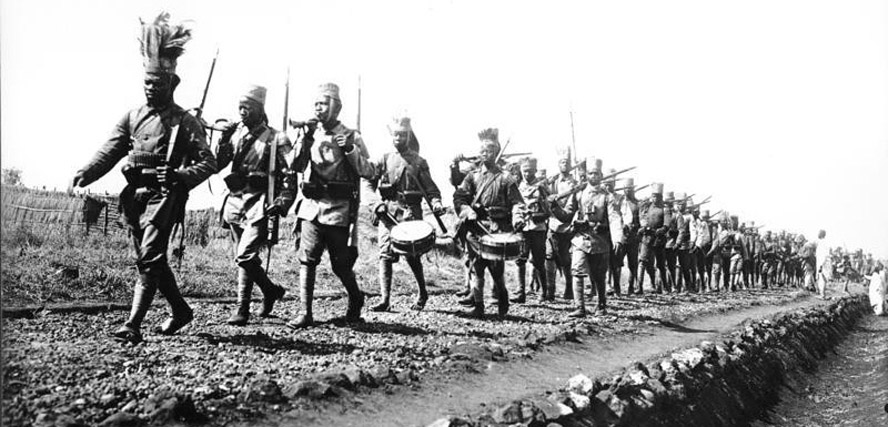
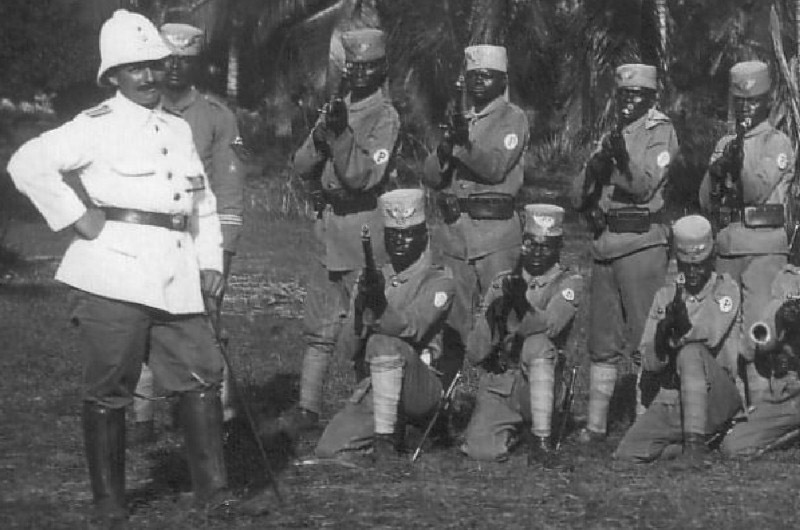
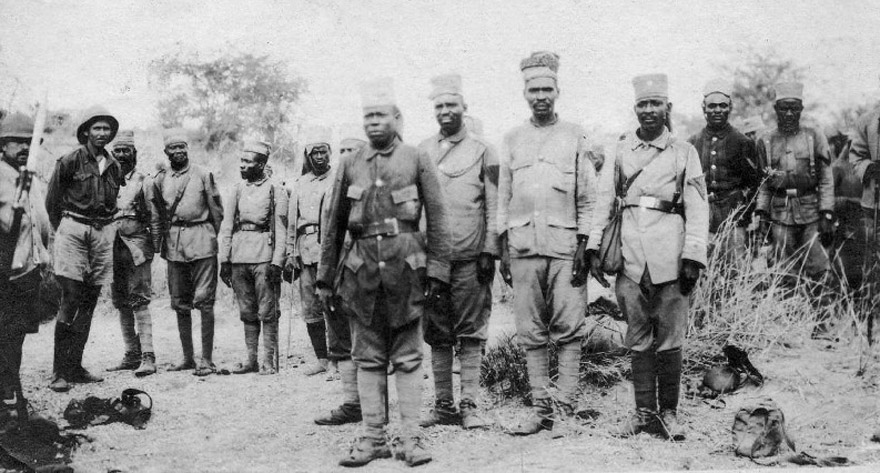
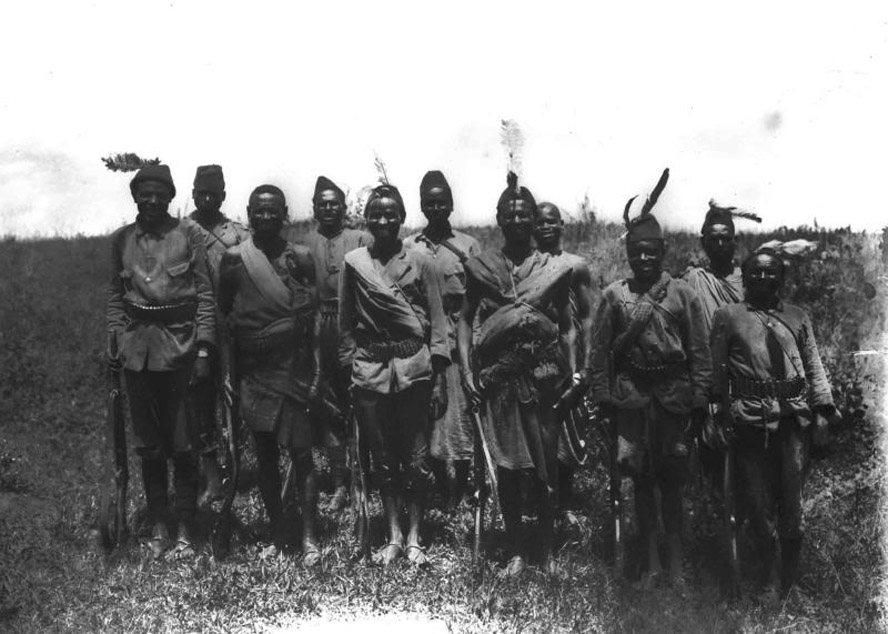
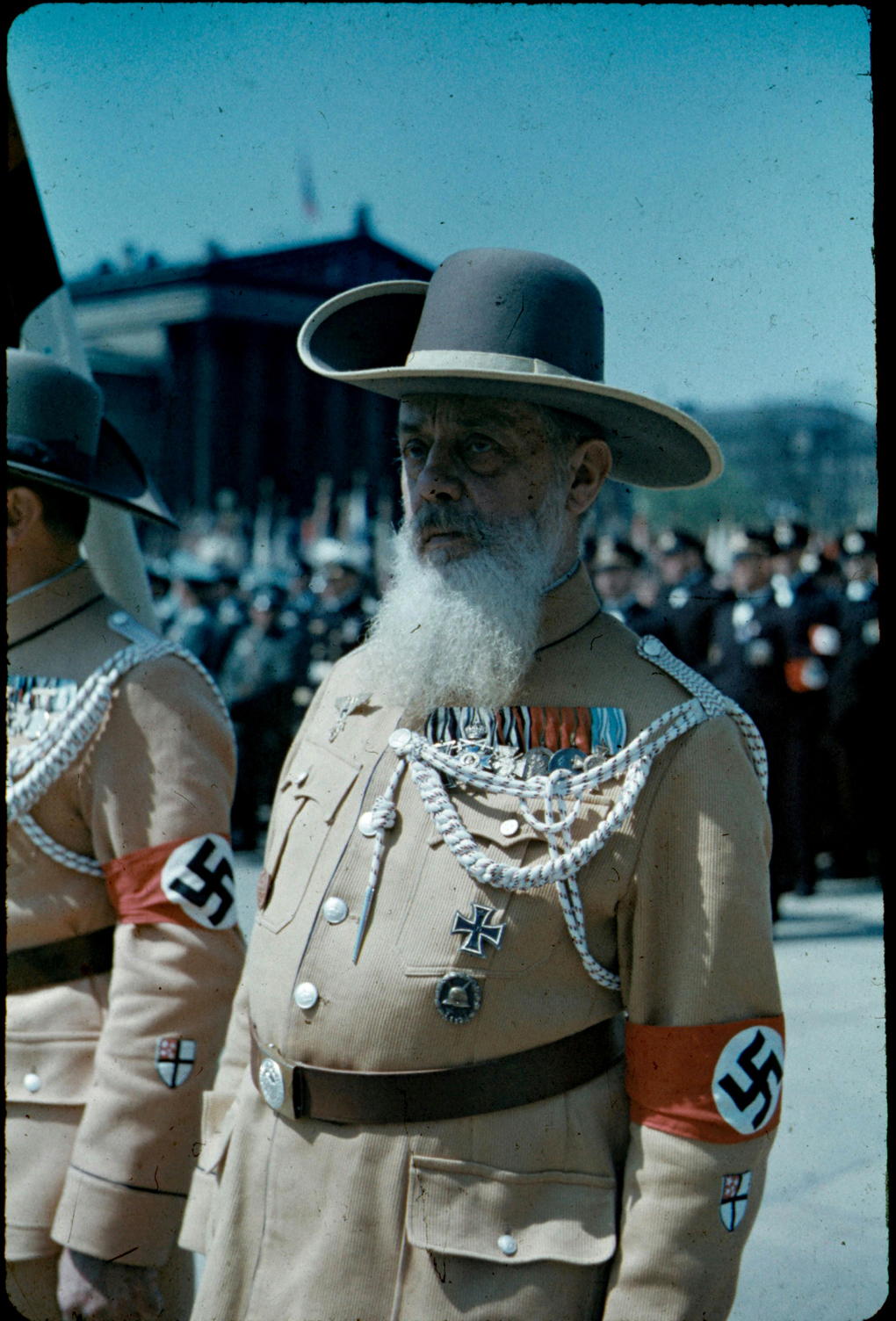
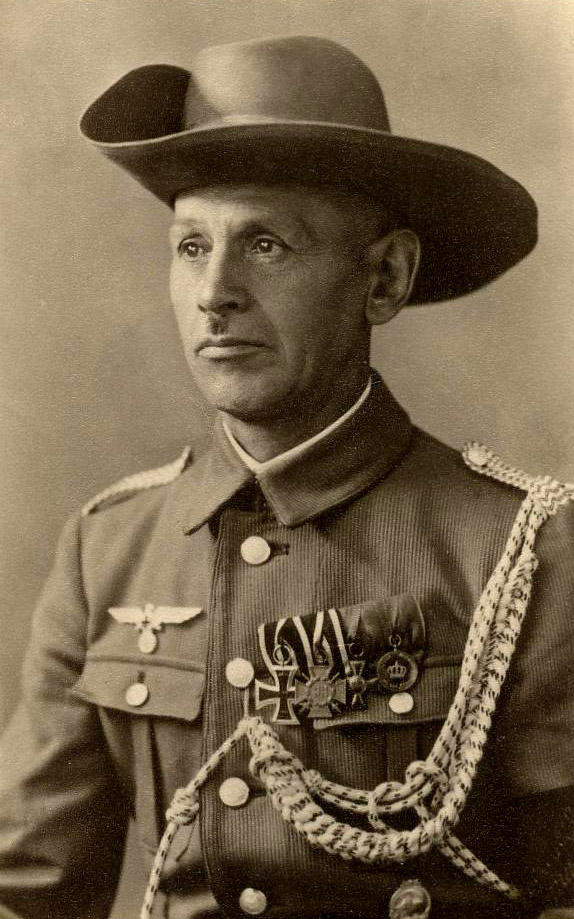
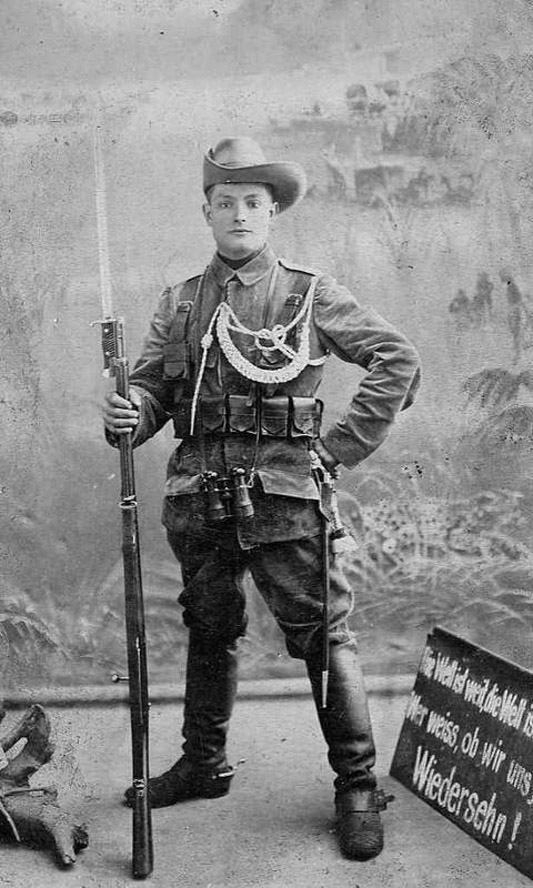
wer weiss ob wir uns wiedersehen!'
who knows if we'll see each other again!).]
